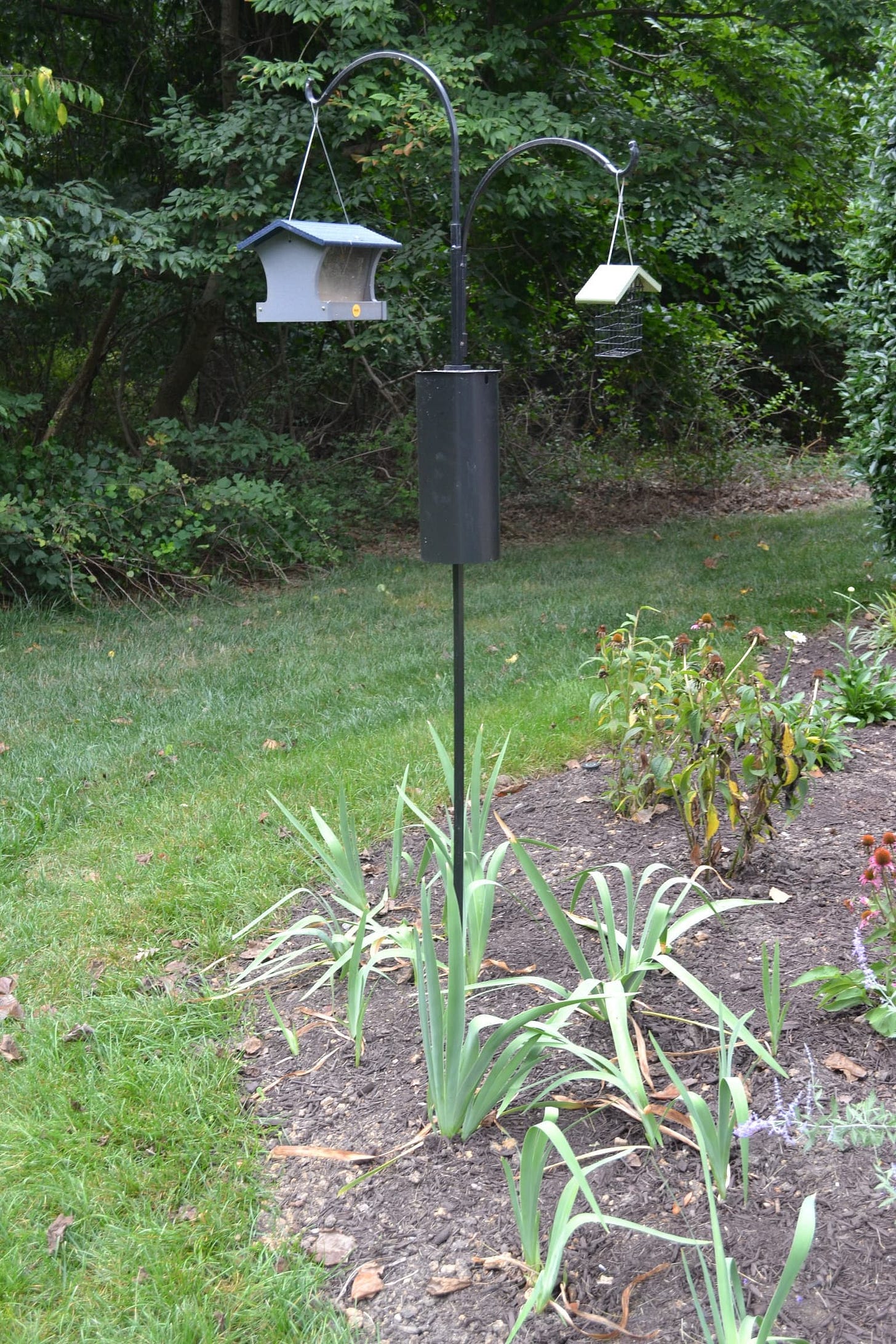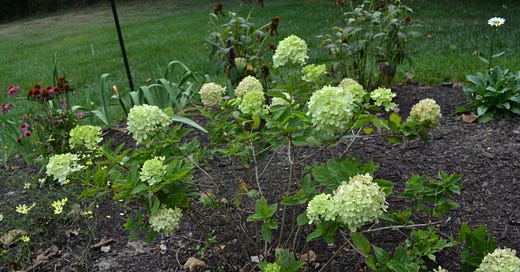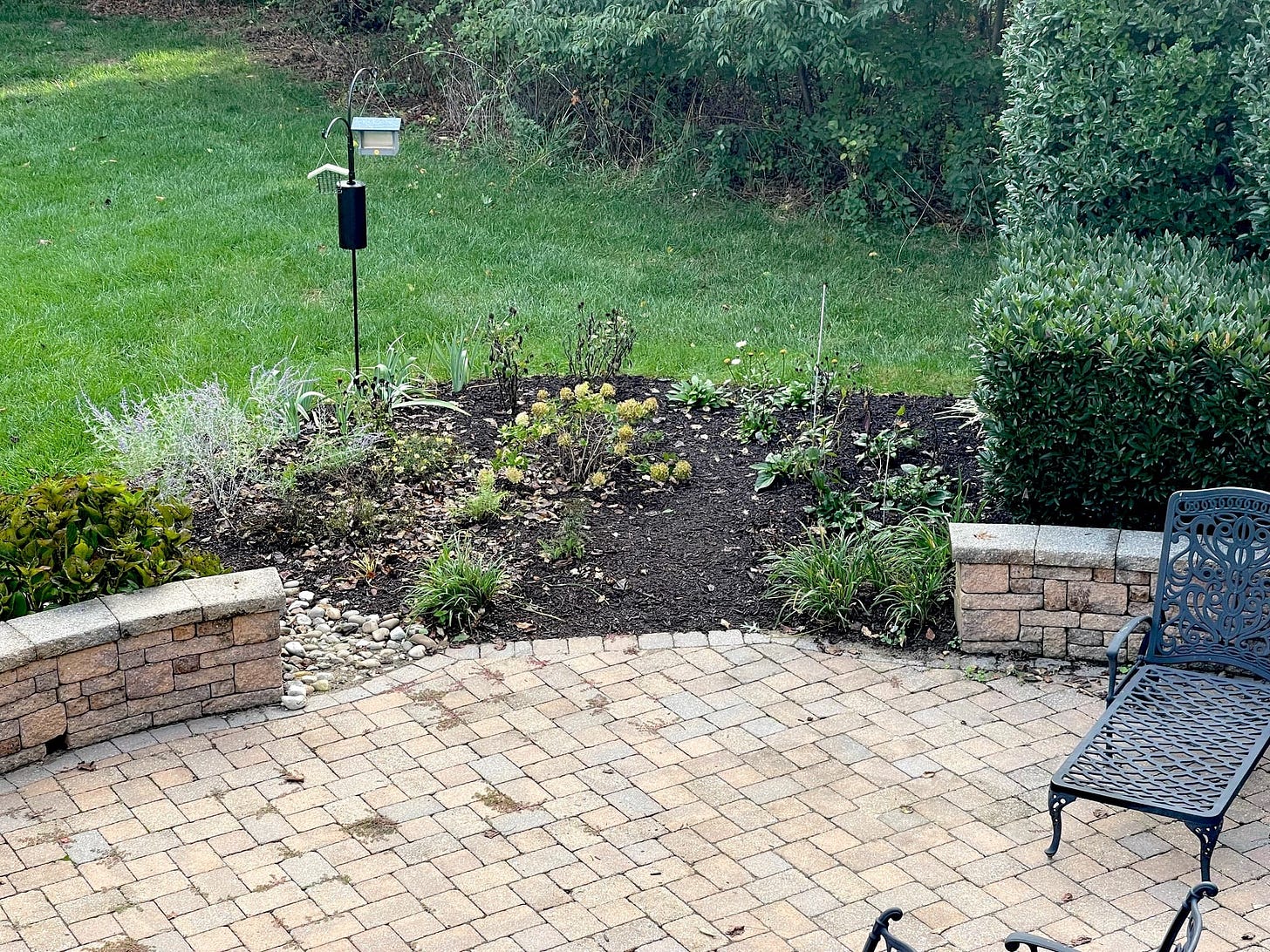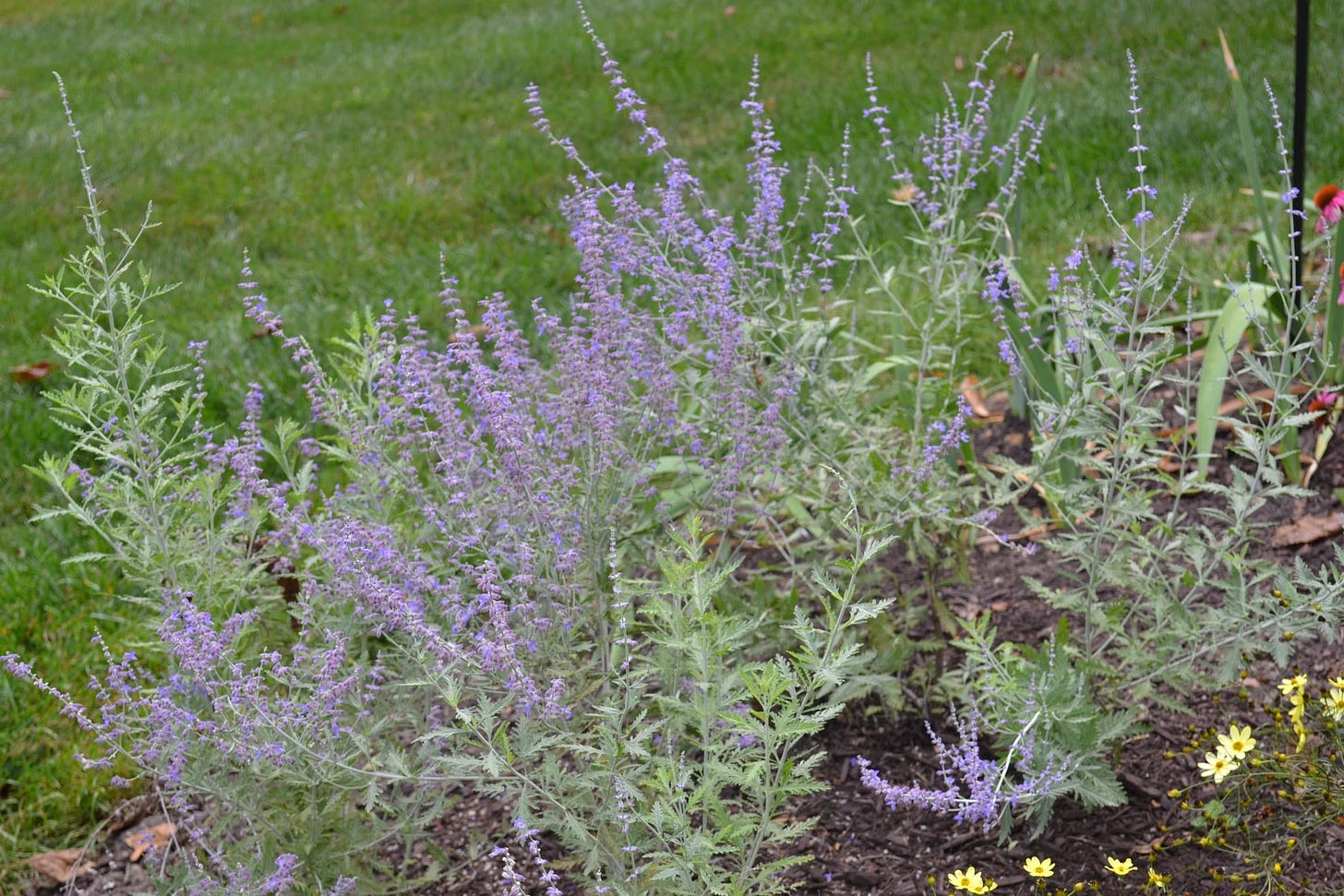The Sun Bed
Having spent two seasons trying to add color to what is mostly a shade garden, the prospect of adding sun-loving plants to a sun-splashed new bed is exciting.
I usually call this the sun bed, but there are other names that are just as apropos.
I often refer to the bed as the bird feeder bed, because the vertical interest comes from the bird feeder I installed this year. Other times I think of this as the transplant bed because it’s full of plants that I’ve transplanted from our front yard, and other parts of the garden, that do well in full sun. This appealed to me because I’m cheap and wanted to avoid buying too many new perennials in this experiment with sun plants. Plus, I’m too impatient to install baby plants from the nursery and wait for them to mature when I could move transplants from the front yard.
The hydrangea was the first plant installed in the new bed. Not having any kind of master plan in mind, I planted it in the middle of the bed where I hoped it might become a focal point. I’m worried that it’s too small to be the centerpiece of the bed, but we’ll see. This season the hydrangea didn’t do anything until mid-summer, and then it exploded with flowers. This particular hydrangea is Little Lime panicle hydrangea. The cool green flowers were a wonderful surprise, considering I didn’t expect the plant to bloom at all this season.
The transplanted irises were originally a gift from my neighbor, Patty. I was looking for a plant that the squirrels, birds, and other critters wouldn’t ruin as they scuttled through looking for bird seed. I think the iris perfectly fit the bill and I’m excited about the prospect of them putting on a great show next spring.

Also moved to the sun bed are the daylilies I originally installed at the entrance of the (now removed) gazebo. Not much to be said about daylilies except they are a gift that keeps on giving. The Russian sage planted in the back left corner of the bed also had an interesting journey. I originally tried the Russian sage in a small bed that sits against the back of the house. The plants had a promising start there, but it became evident they didn’t get enough sun because of the full shade from the house in the afternoons, and they eventually flopped. After being transplanted to the back of the sun bed, three of the plants are doing great and one of them has flopped. The problem with sage is once they’ve flopped there is little to do but cut them back. I love the soft blue hues of the flowers of Russian sage, and I like the different texture it adds to the garden with its tall stems that shoot out in all directions. Hopefully they won’t need to be staked next summer.
The last group of transplants are the black-eyed Susans and the coneflowers. They were all transplanted from the front garden and seemed to do fine over the late summer and into the fall. Now that they are going dormant, I’m wondering if they had enough time to establish their roots so they can live through the winter. I’m planning to let these plants die back this winter, and then cut them back in early spring. Coneflowers and black-eyed Susans both self-seed, and I’m anxious to see if they will fill in some space in the bed next year. I know. I know. I have to be patient.
Not all of the plants in the bed are transplants. I did purchase other sun-loving plants for the bed from the nursery, including coreopsis, yarrow, and Shasta daisies. I left the coreopsis to fend for themselves this winter, I cut back the yarrow to the ground, and the Shasta daisies got similar treatment. All were treated to a dose of leaf mulch to help protect them this winter. I’m sad to report that all four Shasta daisies are replacement plants, meaning the original four didn’t make it, but there is always hope for next season.
I’m trying not to let the first-year look of this bed scare me. The coneflowers and black-eyed Susans have all bloomed, and what’s left of the remaining flowers look awful. The hydrangea is past its flowering peak. So are the coreopsis. But many of these transplants are supposed to go dormant in the fall. Just because they look terrible doesn’t mean I’m killing them, maybe.
I know I’m not the right guy to be giving advice, but for Type A gardeners who are planting new beds, just know that new beds can look sloppy, if not downright ugly. Plants are not mature and don’t look healthy. They flop. They don’t flower. The leaves curl and turn brown. They are subject to a variety of mishaps with pests and deer. And, of course, they die. This turn of events follows the very hard work of planting new beds. At the moment the bed looks like a mess. Once again, I’m afraid that patience, which I’m sorely lacking, is required. I planted most of these plants in late summer and into fall this year. I will be spending a lot of time studying the best way to care for the plants as I prepare them for winter.
If you are a Type A, waiting for next spring might as well be forever. So, my advice is, I’m sorry to say, be patient. There is nothing you can do to make the calendar move faster, and the more you worry about it, the slower time seems to move. (Does that help? It’s like someone telling you to relax.)
What is on deck for next year? There is plenty of room for some kind of sun-loving flowering groundcover in the front of the bed. I’ve been having fun doing the research. At the moment I’m thinking I’ll try some kind of phlox, but I have a lot of options to choose from and don’t have to make any decisions until early spring. One thing is for sure. It will be an interesting walk around this bed on morning patrol next spring, and I’m eager to share how these plants are doing with you.
I thought I would end with an observation about the birds that I decided to feed this year. I thought the birds were going to be my good friends after I invited them to feast on high-quality bird seed. Surprisingly, some of them turned out to be unwelcome guests. I’ll have more to say about birds in future posts here at The Painful Education of a Type A Gardener.










I am amazed with each post to see how many flowering plants you have that your deer don’t eat. They would eat them down to the ground at my house even though I spend a small fortune spraying. The sage are fantastic as the deer never touch them. Creeping flox is also a good alternative for ground cover, and deer.